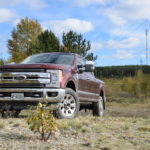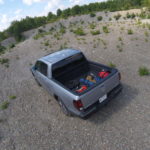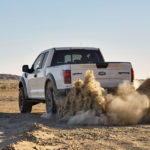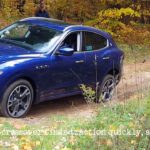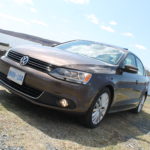Seems everyone and their uncle wants to buy a Jeep Wrangler these days, and I’ve been asked a half-dozen times this month alone if there’s any special care to be taken when looking for a used model.
The answer? Yup. Like all vehicles, the Wrangler is a machine built of parts and components that can wear out and break, faster if the vehicle has been abused and neglected.
If you’re shopping out a few-year-old Jeep Wrangler, be sure to bear the following tips in mind. Doing so will help protect you from purchasing a model that may be hiding costly issues and problems. Some helpful tips are below, followed by some photos and a video review to help familiarize yourself with this popular 4×4.
Used Jeep Wrangler Shopping Tips
Look for the Update: From model-year 2012 and on, Wrangler was updated with an improved interior, and more importantly, a new V6 engine. Smaller in size and bigger in power, the new-for-2012 V6 was dubbed ‘Pentastar’, packed 3.6 litres displacement, and offered a significantly improved 285 horsepower, with manual or automatic transmissions available.
Standard or Unlimited: Wrangler came in two body styles– a standard two-door model, or an extended-wheelbase ‘Unlimited’ version, with four doors and added space and convenience.
Assume The Worst: Approach any used Wrangler you’re considering, assuming that it’s been used by its former owners as an off-road play-thing, and subjected to abusive turf-tossing, swamping, mud and neglect, until you, or a mechanic confirm otherwise.
Check for Leakage and Dampness: Lift away the carpeting where possible and have a peek around. You’re looking for signs of moisture, rust, mould, dirt or sand, or anything else that might indicate the vehicle in question had ever been deeply submerged in a stream or mud-hole, or may have a water leak from its convertible roof (if equipped). Check a model with a soft-top for leaks, particularly around the front A-Pillar. Note that leather surfaces that are dry, hard and resemble beef jerky have likely been very wet on one or more occasions.
Get Underneath: Look over the frame and floor beneath your potential used Wrangler for signs of rust and rot. Many owners suggest inspecting the areas where the body mounts meet the frame, possibly having a light tap around the area with a small hammer to look for ‘soft spots’. Though rust doesn’t seem to be a widespread issue for the Wrangler, it is a possibility. Have a mechanic help if you’re unsure how to check on your own.
Avoid the Death Wobble: Shoppers are advised to budget for a full front-end and steering-system inspection, and an alignment, in their purchase process. A number of factors can contribute to the so-called ‘Death Wobble’, a well-documented issue that’s shocked many owners when an extremely violent vibration throughout the entire vehicle occurs at speed, as the front wheels fight one another. According to Jeep Wrangler owners forums, a number of factors, mainly relating to improperly adjusted or worn-out front-end components, are key causes of this problem. If a mechanic gives the steering and suspension front-end of the Wrangler you’re considering a thumbs up, you’ll have nothing to worry about..
Check the Fancies: Run everything that runs on electricity on board the used Wrangler through its paces, confirming proper operation of the alarm system, windows, locks, remotes, lights, signals, climate control and the like. Owners have reported a wide range of annoying electrical problems—some of which result from a battery that’s on its way out. Others result from ground-points that have rusted, or wiring and sensors that have become wet or submerged in an off-road setting.
Check the Oil: Grab a rag and check the engine oil for proper level and condition in earlier models with the 3.8 litre engine, as some owners report excessive oil consumption.
The Gearbox: In models with the manual transmission, listen closely for any grinding or scraping sounds from beneath the shifter area when the vehicle is in neutral, idling, with the clutch pedal up. A little noise is considered normal, a lot could indicate a damaged or worn-out clutch release bearing or other issue. Have a mechanic check out any unwelcomed sounds for maximum peace of mind.
Watch the Mods: Be weary of modifications on your potential used Wrangler. Though intake and exhaust systems are typically considered safe, a mechanic should have a look to confirm that the ‘upgrades’ were carried out with high-quality parts and workmanship. Suspension lifts or ‘lift kits’, done improperly, can ruin chassis components, fuel mileage and even tires—so skip a used Wrangler with this sort of upgrade unless you’re familiar with the pros and cons of the upgrade(s) in question.
More Info:
Looking for a used car? You’ll find hundreds of used-car shopping guides HERE.
Here’s a Video Review of the 2014 Jeep Wrangler by yours truly, from www.autos.ca






